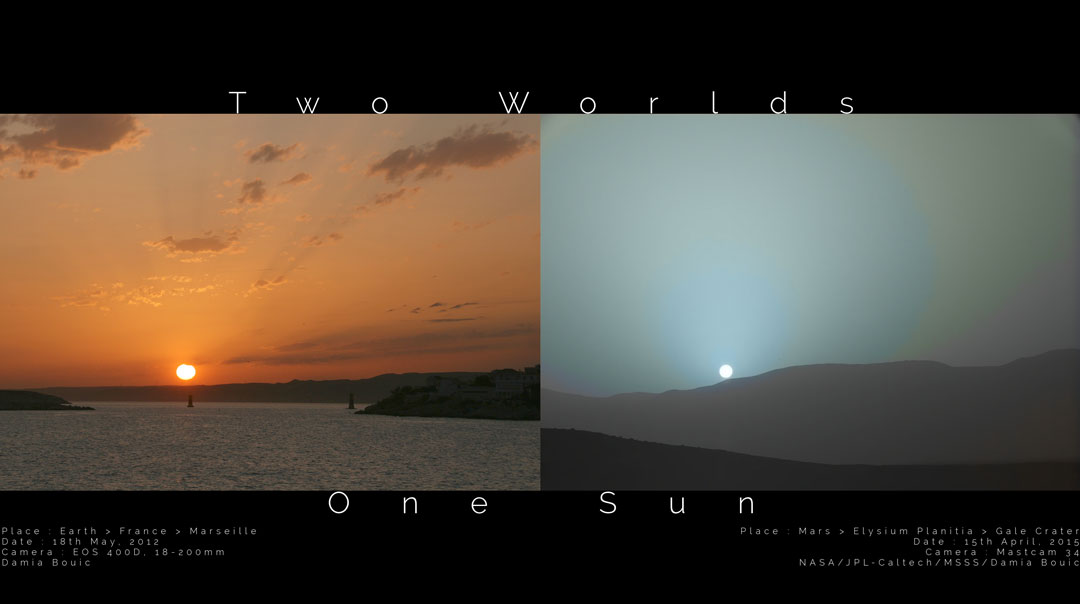2020年8月2日
Two Worlds, One Sun
Left Image Credit & Copyright: Damia Bouic;
Right Image Credit: NASA, JPL-Caltech, MSSS; Digital processing: Damia Bouic
Explanation: How different does sunset appear from Mars than from Earth? For comparison, two images of our common star were taken at sunset, one from Earth and one from Mars. These images were scaled to have same angular width and featured here side-by-side. A quick inspection will reveal that the Sun appears slightly smaller from Mars than from Earth. This makes sense since Mars is 50% further from the Sun than Earth. More striking, perhaps, is that the Martian sunset is noticeably bluer near the Sun than the typically orange colors near the setting Sun from Earth. The reason for the blue hues from Mars is not fully understood, but thought to be related to forward scattering properties of Martian dust. The terrestrial sunset was taken in 2012 March from Marseille, France, while the Martian sunset was captured in 2015 by NASA’s robotic Curiosity rover from Gale crater on Mars. Last week a new rover and a helicopter — onboard Mars 2020 — launched for Mars.
Tomorrow’s picture: gaping comet
二个世界、一个太阳
左图提供与版权: Damia Bouic;
右图提供: NASA, JPL-Caltech, MSSS; 数位处理: Damia Bouic
说明: 火星与地球的日落有多大的差异?为了进行比较,上图呈现了二幅分别摄于地球和火星的日落景观。这些影像的大小经过缩放,以保证它们具有相同的视张角,以便于并排比较。乍看之下可发现,从火星看出去,太阳貌似比在地球所见的要小一些;这项特色很合理,因为火星和太阳的间距要比地球大上50%。影像最明显的差异是:火星落日的色泽,要比地球常见的橘红色落日要更蓝一些。为何火星落日较蓝,其成因并不全然清楚,咸认是和火星尘埃的前向散射性质有所关联。的前向散射性质有所关联。这幅地球落日照摄于2012年3月的法国.马赛,而火星落日则是在2015年由美国航太总署的好奇号火星车,摄于火星的盖尔坑之内。在上星期发射的2020火星任务,正把一部全新的火星车和直升机送往火星。
明日的图片: gaping comet




山川异域,风月同天